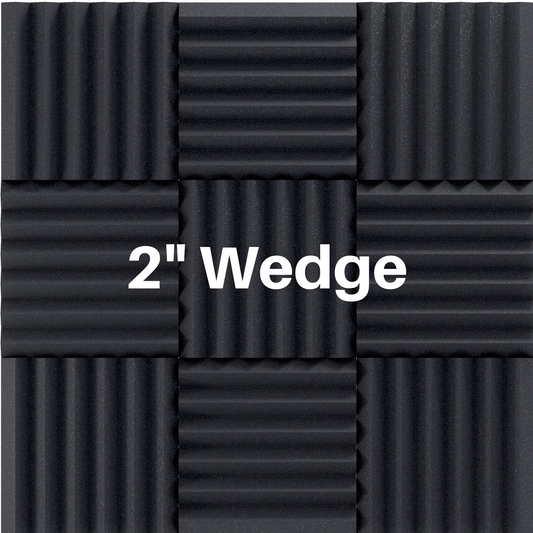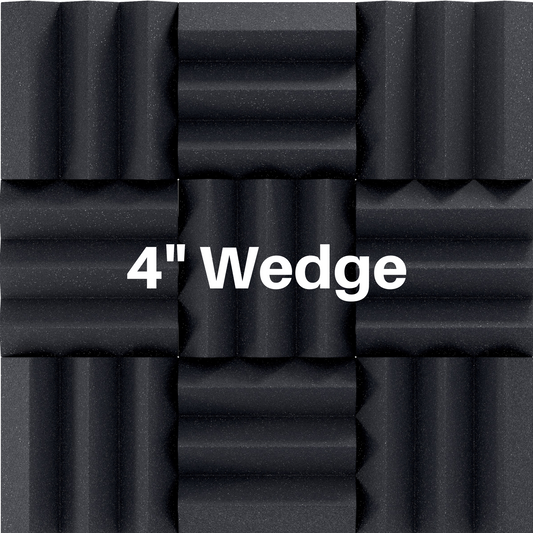What Bass Traps Are and How They're Used in Recording Studios
Share
If you're a musician, then you know that bass is an important part of almost every recording. That's why bass traps are used in recording studios - to help control the bass sound and make sure it sounds great on tape or on digital.
In this post, we'll talk about what bass traps are and how they're used in studios around the world. We'll also discuss where you should put them in your own studio.
What are bass traps?
Bass traps are acoustic devices that are used to absorb low frequency sound waves. It is important to consider these low frequencies because thinner panels and many absorption panels do not absorb bass sound waves.

Here is another graphical representation showing how the low end frequency sound waves are much longer than the high frequency waves. This is why it is essential to have bass traps in your studio so you get full spectrum absorption and a flat frequency response in your room.

Bass traps come in a variety of shapes and sizes, but they all work towards the same goal: reducing bass buildup in a room. This is important for recording studios, because too much bass can cause muddiness and loss of definition in the mix.
By trapping bass frequencies before they have a chance to bounce around the room, bass traps can help make your recording sound clearer and more focused. They also prevent a boomy sounding room.
What kind of bass traps are there?
There are a few different types of bass traps that you'll see in studios, but the most common is the corner bass trap. Corner bass traps are placed in the corners of a room (hence the name), where they can effectively trap bass frequencies that would otherwise bounce around the room.
Below is a picture of some of the acoustic foam corner bass traps we offer.
Another type of bass trap is the freestanding bass trap, which can be placed anywhere in the room. These are often used in smaller studios, where space is at a premium.
You can also use thick panels with an air gap in between the panel and the wall to add more sound absorbing power to the panel and turn it into a bass trap. You will need to make sure the back of the panel is not enclosed so the sound wave can travel through the panel.
How do you know if you need bass traps in your room?
If you are recording drums, bass, piano, or any instrument with a lot of low end then you will for sure need some bass traps in your room. If you are mixing with monitors with or without a sub you will need bass traps. You will definitely need bass traps if you have a subwoofer in your studio.
Even if you are just recording vocals in your room it is a good idea to consider bass traps. Look at the diagrams below showing the human voice frequencies.


The first step is to identify where bass buildup is occurring in your room. The most common problem area is the corners of the room, but each room is different so try and listen for where the bass is building up in your room. This can be done by using a bass drum or speakers to create a sound.
White noise is my favorite way to kind of feel out a room. Use your computer of phone to play some white noise over your speakers. Walk around the room and listen to how different each area sounds. You will be surprised at what your ears can distinguish. Does any area sound extra boomy or muddy? These are the spots where you have bass build up in your room and will need to add some bass trapping.
There are also apps you can use to take measurements of your room. A solid choice is Room EQ Wizard (REW). If you need help reading your REW analysis feel free to contact us and we can help you out.
Once you've identified the areas of bass buildup, you can place bass traps accordingly. If the room has an overall boomy sound, or you cannot identify a single spot then go with the corners of the room starting at the ceiling and working down to the floor.
Below is a picture of a recording studio using corner bass traps.


Bass traps are an important part of any recording studio, and they can help you get the best sound possible on your recordings. So if you're looking to improve the sound of your recordings, be sure to add some bass traps to your studio!
Do you use bass traps in your studio? Let us know in the comments below! And if you have any questions about bass traps or how to use them, feel free to reach out - we're happy to help!





